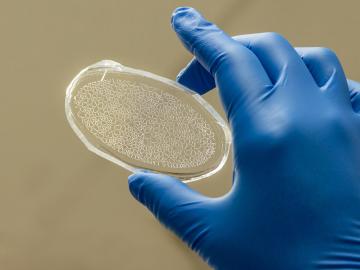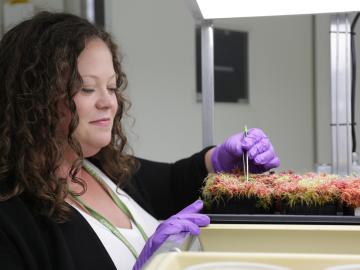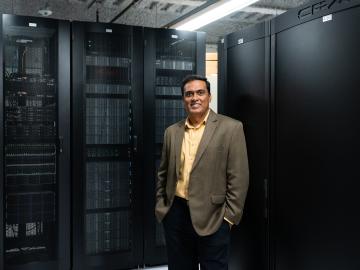
Filter News
Area of Research
- (-) Biology and Environment (85)
- (-) Computational Biology (2)
- Advanced Manufacturing (3)
- Biological Systems (2)
- Computational Engineering (1)
- Computer Science (5)
- Electricity and Smart Grid (2)
- Energy Science (56)
- Fusion and Fission (2)
- Fusion Energy (1)
- Materials (27)
- Materials for Computing (7)
- National Security (13)
- Neutron Science (12)
- Nuclear Science and Technology (4)
- Quantum information Science (3)
- Sensors and Controls (1)
- Supercomputing (52)
News Type
News Topics
- (-) Big Data (8)
- (-) Bioenergy (37)
- (-) Biology (59)
- (-) Composites (2)
- (-) Exascale Computing (4)
- (-) Frontier (3)
- (-) Grid (2)
- (-) Hydropower (8)
- (-) Nanotechnology (2)
- 3-D Printing/Advanced Manufacturing (4)
- Artificial Intelligence (7)
- Biomedical (13)
- Biotechnology (9)
- Chemical Sciences (4)
- Clean Water (11)
- Computer Science (16)
- Coronavirus (7)
- Energy Storage (2)
- Environment (78)
- High-Performance Computing (17)
- Machine Learning (6)
- Materials (2)
- Materials Science (2)
- Mathematics (3)
- Mercury (7)
- Microscopy (7)
- National Security (2)
- Neutron Science (2)
- Partnerships (1)
- Physics (1)
- Polymers (1)
- Security (1)
- Simulation (10)
- Summit (8)
- Transportation (1)
Media Contacts

ORNL has provided hydropower operators with new data to better prepare for extreme weather events and shifts in seasonal energy demands caused by climate change.

A new paper published in Nature Communications adds further evidence to the bradykinin storm theory of COVID-19’s viral pathogenesis — a theory that was posited two years ago by a team of researchers at the Department of Energy’s Oak Ridge National Laboratory.

Scientists at ORNL have created a miniaturized environment to study the ecosystem around poplar tree roots for insights into plant health and soil carbon sequestration.

A team of scientists led by Oak Ridge National Laboratory developed a theory that thylakoids, membrane networks key to plant photosynthesis, also function as a defense mechanism to harsh growing conditions, which could aid the development of hardier plants.

Chemical and environmental engineer Samarthya Bhagia is focused on achieving carbon neutrality and a circular economy by designing new plant-based materials for a range of applications from energy storage devices and sensors to environmentally friendly bioplastics.
Scientists at Oak Ridge National Laboratory are closer to unlocking the secrets to better soil carbon sequestration by studying the tiny, sand-like silicon deposits called phytoliths in plants.

As the United States moves toward more sustainable and renewable sources of energy, hydropower is expected to play a pivotal role in integrating more intermittent renewables like wind and solar to the electricity grid

Microorganisms may provide hope that peatlands can withstand hotter temperatures in a changing climate.

The Atmospheric Radiation Measurement Data Center is shepherding changes to its operations to make the treasure trove of data more easily available accessible and useful to scientists studying Earth’s climate.

To optimize biomaterials for reliable, cost-effective paper production, building construction, and biofuel development, researchers often study the structure of plant cells using techniques such as freezing plant samples or placing them in a vacuum.


